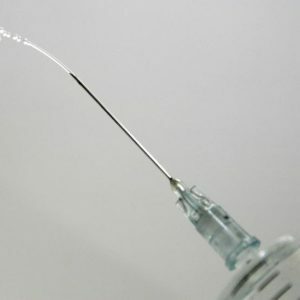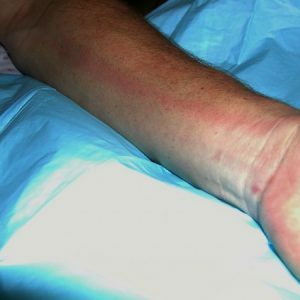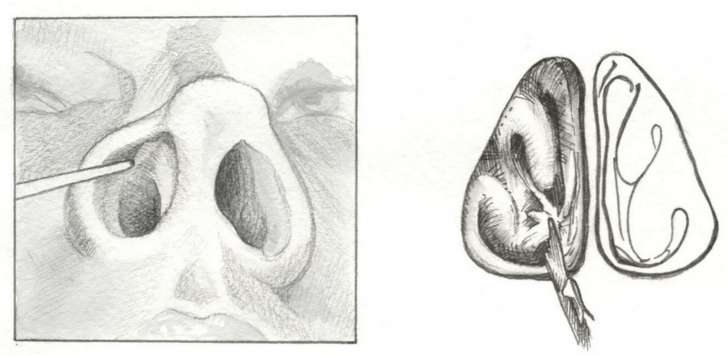Anemia: Symptoms and Treatment in Adult Women and Men
Content
- What is anemia?
- Causes of anemia
- 1. Anemia associated with low levels of hemoglobin in the blood
- 2. Anemia associated with blood loss
- 3. Anemia resulting from other diseases
- Symptoms of anemia
- Stages and types of anemia
- Iron-deficiency anemia
- Sickle cell anemia
- Pernicious anemia
- Aplastic anemia
- Thalassemia
- Diagnosis of anemia
- Determination of the level of hemoglobin and erythrocytes in the blood
- Establishing the cause of the disease
- Treatment
- Drug therapy
- Home treatments for anemia
- Nutrition
- Folk remedies
- Prophylaxis
- Forecast
- Related Videos
What is anemia?
Human blood consists of a liquid base (plasma) and solid fractions - leukocytes, platelets and erythrocytes. Each group of blood cells performs a specific function in our body.
So, leukocytes are an integral part of the immune system, platelets are responsible for hemostasis, and erythrocytes, with the hemoglobin contained in them, are a kind of transport, a carrier of oxygen in the body.
But it so happens that the content of erythrocytes and hemoglobin in the blood is lowered
. As a result, oxygen starvation of various organs and systems can occur. The name of this pathology is anemia.Naturally, there can be no question of any normal functioning of the organism under these conditions. Therefore, anemia, which occurs even in a mild asymptomatic form, can be a cause and a risk factor for the development of various severe ailments.
Causes of anemia

Anemia is, in fact, the general name for a syndrome accompanied by a decrease in the level of hemoglobin in the blood.
At the same time, the causes of such a disease can be very different.
The clinic of the disease, tactics and methods of treatment depend on them.
In medicine, all these reasons are combined into 3 groups.
1. Anemia associated with low levels of hemoglobin in the blood
The main cause of anemia is the lack of intake and assimilation by the body of iron, which is responsible for the synthesis of hemoglobin.
If this trace element is not received, hemoglobin levels in the blood fall, the number of blood cells decreases and, as a result, anemia occurs.
To maintain hemoglobin levels within the normal range, it is important for the body to get regular iron from food.
Most of this trace element is found in animal products (red meat, liver, fish, eggs). Plant food also contains iron (especially apples, dried fruits, nuts), but the percentage of its absorption is noticeably lower.
Provoking factors:
- unhealthy diet is the leading cause of anemia;
- pregnancy and lactation is also a factor in the development of anemia. The woman's body during the above periods spends significant resources on the child, "giving" the necessary vitamins and minerals, which, coupled with insufficient nutrition, leads to a decrease in the level of hemoglobin in blood.
- chemical or food poisoning;
- diseases of internal organs;
- adherence to strict diets;
- exhausting physical activity.
2. Anemia associated with blood loss
The main cause of such anemia is acute or regular blood loss and the associated hemodynamic disorder, when there are not enough red blood cells to perform their direct function.
Read also:Decreased hemoglobin in women and men, what does this mean and what should be done?
This condition can be provoked by:
- blood loss associated with bleeding (wound, stomach, nose, etc.);
- regular blood loss due to donation;
- abundant menstruation in women.
3. Anemia resulting from other diseases
Many illnesses can cause anemia. This is due either to direct damage to red blood cells, or to the loss of the body's ability to absorb iron and other trace elements and vitamins.
The main provoking factors:
- oncological diseases;
- HIV infection;
- Crohn's disease.
In addition, a hereditary predisposition to anemia is also an important factor.
In some cases, various genetic diseases cause anemia. Such forms of anemia are considered incurable.
Symptoms of anemia


Regardless of the reasons for the anemia, the disease is characterized by the fact that at its first stage there are no visible symptoms.
The patient may feel great, but the level of erythrocytes and hemoglobin is low.
At this stage, a diagnosis can be made only on the basis of laboratory blood tests, which are characteristic of anemia decreased hemoglobin level and severe erythrocytopenia.
As the disease progresses, clinical signs of anemia become noticeable to the patient himself and his environment. These include:
- pallor of the skin, which is often accompanied by dryness;
- dizziness;
- depression;
- fainting;
- Feel tinnitus and "flies" before the eyes;
- tachycardia of the heart;
- dyspnea;
- appetite disorders;
- fast fatigue, fatigue;
- decrease in the level of attention, concentration, cognitive abilities.
Stages and types of anemia
Anemia is determined by the deviation of the hemoglobin level in the blood to the lower side of the norm. The content of hemoglobin in the blood in adult men 120-140 g / l.
In children and women, it may be slightly lower. The indicator of this substance in the blood is less 120 g / l indicates the presence of anemia. There are 3 degrees of severity in terms of hemoglobin levels:
- 1st degree characterized by a mild course and the absence of clinically pronounced symptoms. The hemoglobin level of the blood is 100-120 g / l. Anemia at this stage can be easily corrected with just one change in diet;
- 2 degree of anemia occurs when hemoglobin values are in the range of 70-100 g / l. The patient experiences most of the above symptoms. A change in nutrition alone is not enough - the patient needs to regularly take iron-containing drugs;
- Grade 3 anemia occurs when the hemoglobin level falls below 70 g / l. This life-threatening condition usually occurs with acute blood loss or hemolytic shock and requires immediate medical attention.
Despite the similarity of clinical symptoms, causes of anemia are completely different. Therefore, there are quite a few types of anemia.
Iron-deficiency anemia
The most common type of ailment. The disease is usually associated with a lack of iron in food, blood loss. According to statistics, more 90% all cases of anemia are associated precisely with a deficiency of this important trace element.
Read also:Angioma
Sickle cell anemia
This type of anemia is a severe genetic pathology, expressed in a violation of the synthesis of hemoglobin in erythrocytes, as a result of which damage and death of red blood cells occurs.
Severe sickle cell anemia in combination with concomitant factors (thin air, being in stuffy, unventilated room) can lead to a hemolytic crisis, which is a direct threat to life sick.
Pernicious anemia
This type of anemia is a consequence of another pathology associated with insufficiency vitamin B12. This vitamin is involved in the synthesis of blood hemoglobin.
Violation of its assimilation in the gastrointestinal tract or insufficient intake with food leads to a deficiency of this substance and, as a result, anemia.
Treatment of this type of anemia is directly related to the elimination of vitamin B12 deficiency.
A lack of folate, which plays the same role in the body as vitamin B12, can lead to anemia.
Aplastic anemia
This form is associated with a disruption in the production of blood cells by the bone marrow. As a rule, it is caused by genetic pathology.
Thalassemia
The most severe form of anemia. Due to genetic disorders, the rate of hemoglobin synthesis changes, which leads to a significant deterioration in the function of erythrocytes. Unfortunately, thalassemia is an incurable disease, so the treatment of the disease is aimed only at alleviating the patient's condition.
Diagnosis of anemia
Diagnostic measures for suspected anemia include the following steps:
Determination of the level of hemoglobin and erythrocytes in the blood
The presence of anemia is determined by the amount of hemoglobin contained in red blood cells. The norm is the hemoglobin content within 120-140 g / l. However, this figure can vary greatly depending on the gender and age of the patient.
In any case, if you suspect anemia, you should carry out general blood analysis(from the finger) to determine the level of erythrocytes and hemoglobin.
In addition, the doctor may prescribe additional blood tests that determine the hemoglobin content in the blood cell, the number of reticulocytes. A biochemical blood test allows you to find out the level iron content and bilirubin.
Establishing the cause of the disease
To determine the cause of the disease and determine how to treat this type of anemia, various diagnostic methods aimed at studying the state of the gastrointestinal tract (fibrogastroscopy, fibrocolonoscopy etc.).
Since symptoms and treatment in adult women may resemble those in gynecological pathologies, it is important to carry out the necessary "female" tests.
In general, there are quite a few causes of anemia, therefore, the choice of one or another diagnostic method is determined by the doctor, depending on the collected anamnesis.
Treatment
Treatment of anemia directly depends on its type and on what causes it. So, the treatment of anemia, which is associated with profuse blood loss, consists in stopping bleeding, restoring hemodynamics.
In iron deficiency anemia, treatment tactics are aimed at eliminating the deficiency of trace elements by correcting nutrition and taking medications.
Read also:Iron deficiency anemia (IDA)
For some types of anemia, palliative treatment is indicated, aimed at eliminating the symptoms of the disease.
Drug therapy

Iron-deficiency anemia is the most common, but it is also the most successfully amenable to therapy.
To correct the level of hemoglobin in the blood, doctors prescribe iron supplements.
The most common ones are:
- Ferretab;
- Sorbifer Durules;
- Ferro-Foilgamma
The type of drug, its dosage and duration of the course should be determined by the attending physician.
When treating anemia caused by a lack of vitamin B 12 or folic acid, a decision is made to take vitamin preparations.
For anemia associated with genetic disorders, the intake of vitamins and iron-containing preparations is indicated. However, in addition to this, regular blood transfusions are required.
In thalassemia and during hemolytic crises, glucocorticoids are widely used.
Home treatments for anemia
Changing the regime and nature of food is one of the main methods of treating anemia.
In the treatment of anemia, traditional methods are widely used, the use of which is possible only in consultation with a doctor.
Nutrition
An important role in treating iron deficiency anemia plays the patient's food. The diet should be dominated by protein-rich foods, mainly of animal origin (meat, fish, eggs, liver, etc.).
With anemia, the frequency of nutrition is also very important. It is best to eat in small portions, 5-6 times a day.
Folk remedies

Rosehip is widely used for the treatment of anemia, the fruits of which contain large amounts of iron and vitamin C. To prepare the medicine, 5 tablespoons of chopped rose hips are poured with a liter of water and boiled for 10 minutes.
Then the drug should be infused. Rosehip with anemia is drunk practically without restrictions, using it instead of tea.
With anemia, it is good to use honey. 3 tablespoons honey should be taken before meals at intervals of 4 times a day. This will help in the early stages of anemia.
Prophylaxis
Prevention of iron deficiency anemia is the consumption of protein-rich foods rich in iron. It is important to ensure that your diet is as varied and balanced as possible.
In addition, the elimination of existing bleeding plays a significant role in the prevention of anemia.
Forecast
In the case of timely treatment of iron deficiency anemia, the prognosis is favorable, it is enough only to eliminate its main causes.
In cases where anemia is caused by bleeding (post-hemorrhagic anemia), the prognosis is also favorable, but only with timely identification of the problem and adequate treatment.
The prognosis for other forms of anemia is poor, since in most cases the disease caused by genetic disorders are impossible, and treatment consists only in providing palliative care sick.



